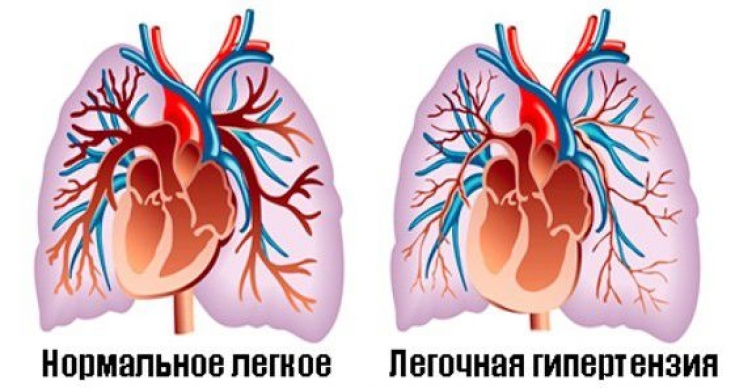The habit of going to the doctor only as a last resort can play a bad joke. But many patients, knowing this truth, try to overcome their self-diagnosis on their own.
When it comes to pulmonary hypertension, don't put off going to the doctor. The disease is characterized by a pathological condition during which the blood pressure in the pulmonary artery rises.
The disease is progressive, and a small number of symptoms makes it difficult to diagnose in the early stages of the disease. estet-portal.com has prepared material about this problem, the reasons for its development and risk groups.
1. Determine the causes of pulmonary hypertension
2. Pulmonary hypertension: who is at risk
3. Symptoms of pulmonary hypertension: how not to confuse
Determining the causes of pulmonary hypertension
There are many studies on the reasons for the development of the phenomenon, but no one has yet identified reliable reasons.
This is due to the fact that the prerequisites for the disease are hidden at the gene level. When it comes to pulmonary hypertension of the primary type (rarely observed), the etiology of the disease is unknown, although the cause is not always important for the treatment of hypertension.
Pulmonary hypertension of the secondary type develops as a result of various diseases, among which:
• heart disease;
• myocarditis;
• congestive heart failure;
• mitral stenosis;
• obstructive pulmonary diseases that are chronic;
• thrombus formation in pulmonary branches;
• hypoventilation of the lungs, etc.
Follow us on Instagram.
Pulmonary hypertension: who is at risk
Due to the severity of the disease, many people want to know if it is possible to prevent the development of the disease. Prevention as such does not exist, but risk groups have been identified when a person can be among the sick.
So, the risk group includes:
• people who take oral contraceptives;
• patients who have had autoimmune diseases, including rheumatoid arthritis, lupus erythematosus;
• patients with a family history;
• people who are classified as HIV-infected;
• patients who use appetite suppressants;
• drug addicts.
To this list should be added those diseases that are indicated in the causes of the development of the disease. In the course of the study, it was found that the listed conditions can cause an increase in pressure in the pulmonary artery.
Most often, pulmonary hypertension is diagnosed in young women with an age category of 30-40 years.
It has been proven that males are 4 times less likely to suffer from this disease. And, in general, the incidence of the disease is 2 cases per 1 million people.
Symptomatics of pulmonary hypertension: how not to confuse
A big problem in early diagnosis is the lack of symptoms of the disease. In this regard, the diagnosis is often made in severe forms of the disease. The initial sign of the disease is considered to be an increase in pressure in the pulmonary artery several times in relation to the norm.
As the disease develops, the following symptoms are observed:
• Bouts of breathlessness when not exerting;
• cough;
• spinning in the head;
• hoarse voice;
• weight loss;
• fatigue.
When the disease is already detected, the following symptoms are usually added to the indicated symptoms:
• coughing up blood;
• chest pain;
• leg swelling;
• pain in the area of the liver.
To diagnose the disease, first of all, the pressure in the pulmonary artery is changed, the norm of which in a calm state – 9-16 mm. rt. Art.
If the pressure in the pulmonary artery is 20 mm Hg. Art. and above, then pulmonary hypertension is diagnosed.
So, pulmonary hypertension is recognized as a serious pathological condition when pressure in the pulmonary artery increases.
There are a number of diseases that provoke the development of the disease, but the exact causes have not been fully established.
People who are at risk should carefully study the initial symptoms of pulmonary hypertension. To consult a doctor in a timely manner for diagnosing and measuring blood pressure.
It is difficult to prevent the disease, but with the right treatment it is possible to overcome it with great success.
Vagus nerve: symptoms of inflammation and how to deal with it
You may be interested in: Perfect belly in 5 minutes a day.







Add a comment